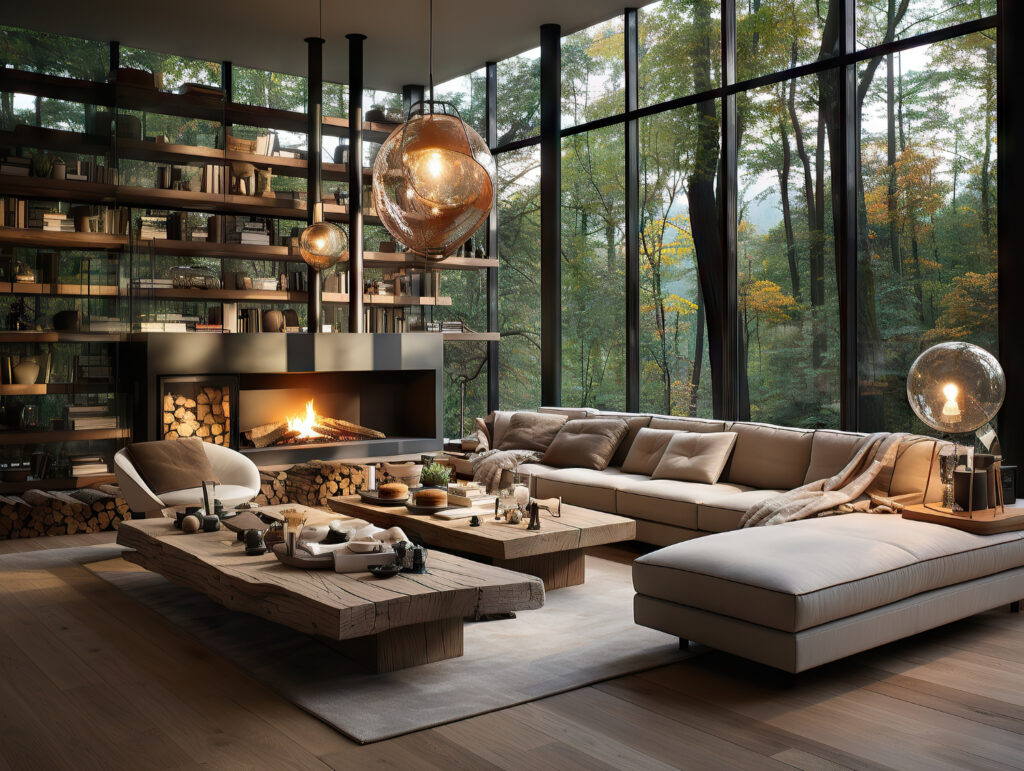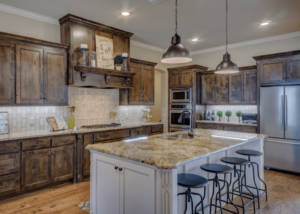The designs keep on evolving with time, and the field of interior design is no exception. There have emerged different types of interior design techniques and styles that have gained popularity. Among these, two common styles are contemporary interior design and modern design. Though they are very often confused with each other, they are pretty different in many aspects. The following blog shall demystify the differences for you and help you choose which one will work best for your space.
1. Definition of Modern Design
Modern interior design is a specific historic period of design. The style came into being during the early to mid-20th century. It had a focus on minimalism and function. Key characteristics include:
- Simplicity: Modern design focuses on clean lines and very little ornamentation.
- Functionality: Every single piece serves a purpose; some have hidden storage or serve more than one use.
- Neutral Colors: Whites, grays, and beiges dominate, along with flashes of bolder colors.
- Natural Materials: The use of wood, metal, and glass is common, exposing the way it is made.
Modern design emanated from the Bauhaus and International Style movements, which, in turn, aimed at functionality and beauty without any excesses. Consequently, it embraced simplicity and purposefulness.
2. Definition of Contemporary Design
On the other hand, contemporary is the modern trends and styles of today. It changes through time. It’s never fixed; it always changes and reflects on the current day’s popularity. The key elements are:
- Flexibility: Contemporary interior design is in continuous transformation along with trends; adapting to new styles and ideas.
- Material Variability: A combination of metals, woods, and fabrics are combined within this form to get the desired look.
- Color Variety: Encompasses a broad color palette with varied patterns, mostly matching the current trend.
- Flexible Spaces: Comprises open, free-flowing areas adaptable to multiple functions.
Contemporary design is fluid and constantly in flux, reflecting recent developments in interior design.
3. Historical Context
Understanding the historical context shall provide a basis for differentiation between these styles:
- Modern Design: This is the design that emanated during the early years of the 20th century and was shaped under the influence of movements such as Bauhaus and Mid-Century Modern. Moreover, it represents a distinct period of time, usually recognized to have an identifiable set of characteristics.
- Contemporary Design: However, contemporary design typically characterizes current trends and can change throughout any particular period of time. In contrast, it refers to design relevant to the present day, rather than to any particular historic period in which it actually took place.
4. Defining Features of Modern Design
Modern interior design has specific characteristics that describe its appearance:
- Clean Lines: Furniture and architecture are mainly composed of straight, plain lines.
- Minimalism: It is all about simplicity and function; details are not added unless needed.
- Open Spaces: All spaces are wide and open with the minimum number of partitions.
- Neutral Palette: It typically contains whites, blacks, and grays, with natural materials providing an accent.
These traits put together result in one slick, uncluttered style that is timeless and purposeful.
5. Defining Characteristics of Contemporary Design
Since contemporary design changes with time, it has some typical characteristics:
- Trend-Driven: It follows the current period design trends and styles.
- Diverse Array: Many styles are combined with varied materials and colors to provide unique looks.
- Bold Colors: Invariant and bright colors, usually taken from the latest fashion trend.
- Innovative Materials: Avant-garde usage of new materials and technologies in reflection of present-day development.
All this creates a dynamic, up-to-date aesthetic indeed representative of today’s design taste.
6. Furniture Styles
The furniture, moreover, tells much about the core principle of modern and contemporary designs. Additionally, it highlights key differences between the two styles.
- Modern Furniture: Modern furniture features clean lines, functional design, and minimal decoration. However, examples include Eames chairs and mid-century modern sofas.
- Contemporary Furniture: Extremely varied, often featuring elements of many styles combined. Examples include bold geometric shapes and mixed materials.
Modern furniture emphasizes simplicity, whereas contemporary furniture reflects the latest material trends and eclectic style.
7. Color Schemes
Color is essential for the two styles:
- Modern Design: A neutral color scheme is used and may include bold accents occasionally. Predominant colors are white, grey, and beige.
- Contemporary Design: All colors, from bold and bright to pastel colors. The color schemes are inclusive of current trends.
The color used will, therefore, to a great extent, influence the mood and style of the space. Additionally, it will also impact the overall ambiance and design aesthetic.
8. Application of Texture
Textures add life to the general design and feel of a space:
- Modern Design: Smooth textures like glass and polished wood accentuate the space, adding sleekness to it.
- Contemporary Design: The style shows off all kinds of textures, from plush fabrics and rough wood to shiny metals that create the depth and interest desired.
Moreover, added textures in both styles can add warmth and character, but the approach differs.
9. Space Planning
Space planning, therefore, affects the functionality of a room and how it feels. Additionally, it determines the overall comfort and flow of the space. Here’s how:
- Modern Design: It plans for an open feeling that is less cluttered with partitions.
- Contemporary Design: Focuses on the ease of change and adapting to whatever changes might happen, so here, we find multifunctional furniture pieces common.
Effective space planning, therefore, will make every room more functional and, in turn, look nicer.
10. Lighting
Lighting has an essential role in both styles; the only difference is how it is applied:
- Modern Design: Makes use of simple-looking, geometric lighting fixtures, which include pendant lights and track lighting.
- Contemporary Design: Involves several kinds of light from statement pieces to highly innovative creations.
However, the proper choice of lighting will highlight key elements and create the desired mood.
11. Art and Accessories
Art and accessories give the general look and feel:
- Modern Design: It includes very few artworks and/or accessories, and the pieces in a room tend to be striking.
- Contemporary Design: It uses almost any type of art and a large number and variety of accessories – what is hot now and what makes a home a personal expression.
Moreover, art and accessories enhance the individuality of the space and reflect contemporary taste.
12. Sustainability
Sustainability is a larger concern with today’s design:
- Modern Design: Modern design focuses on using organic materials and classic craftsmanship.
- Contemporary Design: It does tend to use recycled materials and eco-friendly materials symbolic of the current battle over the environment.
Sustainable design decisions can very well enhance both aesthetic and ecological values.
Conclusion
Moreover, understanding the differences between modern and contemporary lets you make informed choices for your space. Because modern design is more rooted in its historical movements, modern design can provide a truly timeless, minimalist look. Contemporary design, on the other hand, is the current trend, bringing room for diversity into style. Lastly. putting your needs and preferences on the table enables you to choose which style will best suit your home.






